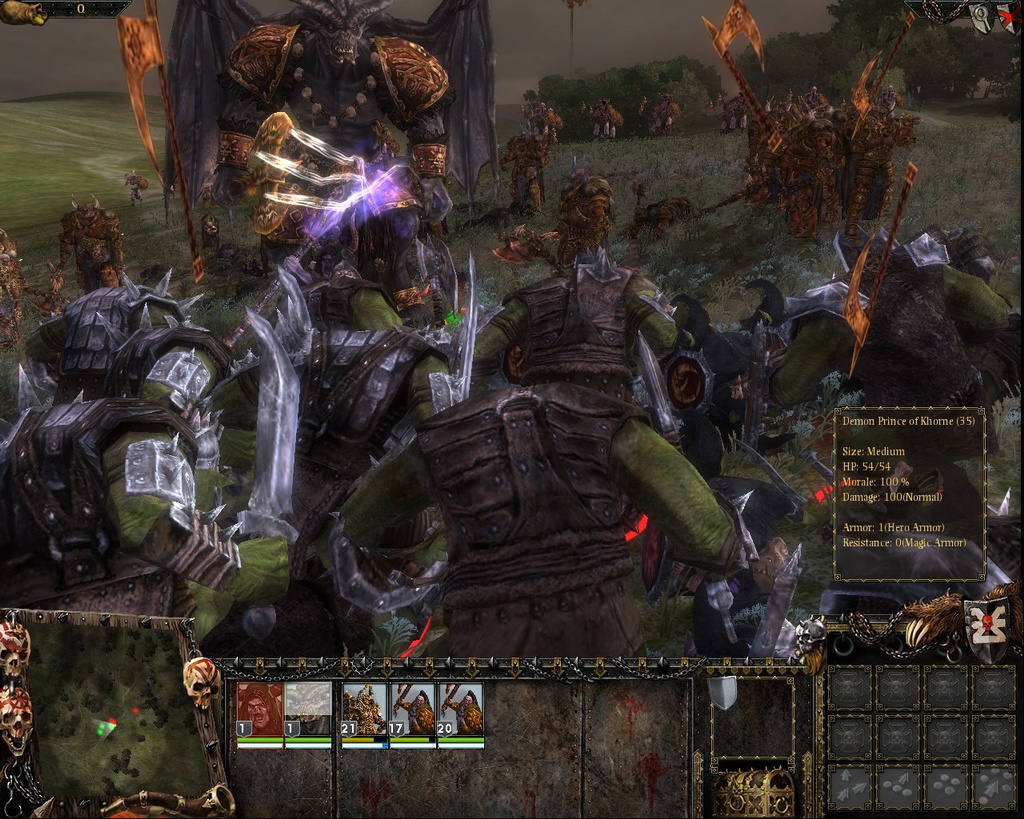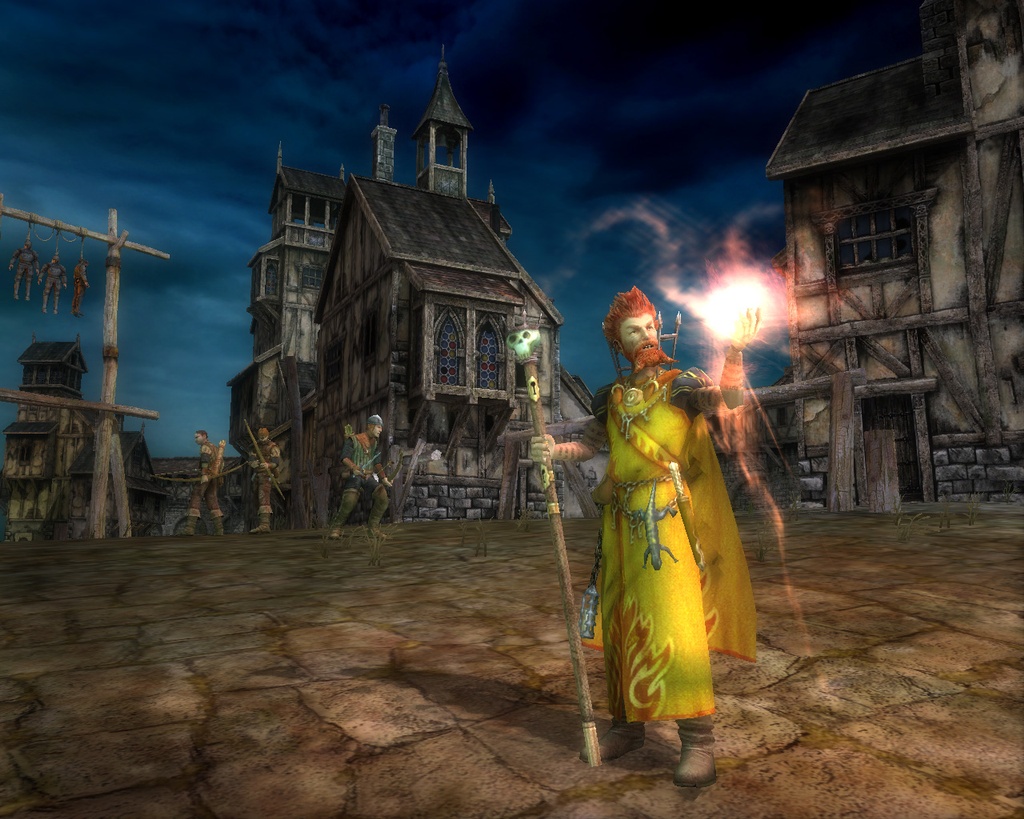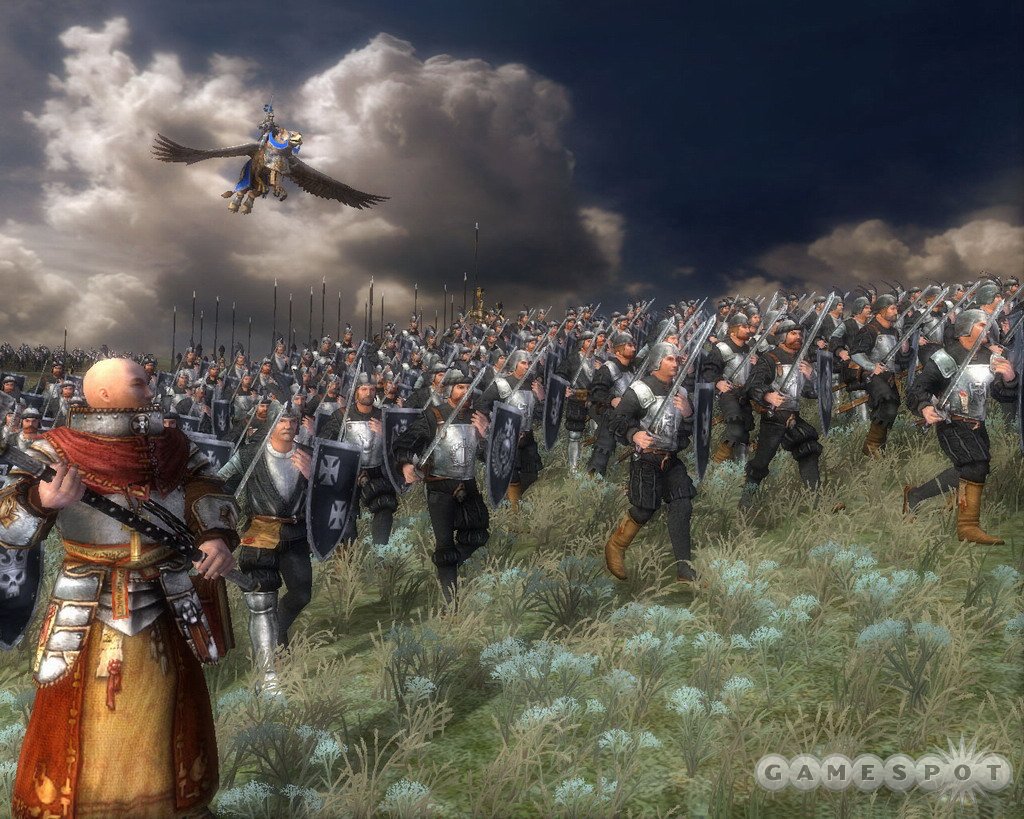Warhammer: Mark of Chaos Hands-On - Battles, Heroes, Customization, and More
We check out firsthand this intense real-time strategy game set in the fantasy universe of Warhammer.
Following our Electronic Entertainment Expo coverage, we managed to spend some time recently watching and playing Namco Bandai's forthcoming real-time strategy, Warhammer: Mark of Chaos. Most of the time we looked on with envy as Namco's Chris Wren had all the fun, but later we, too, got to wreak a little havoc in the latest work-in-progress version of the game.

For those people not familiar with the Games Workshop franchises, the UK-based company's chief pursuit is tabletop gaming. The universes of Warhammer (fantasy) and Warhammer 40,000 (sci-fi) have been around for many years now, and were more recently added to with a tabletop version of The Lord of the Rings. Mark of Chaos concentrates on the first of these worlds, giving the player the choice of two single-player campaigns, one on the force of good, and the other of evil.
With the game heading for a late-2006 shipping date, most of the final elements in the game have now been added, although the campaign map--the overview map used to progress the story--hasn't yet been finalised. Therefore, the majority of the action we saw took place on the battle map, a mode which plays out a little like a combination of Rome: Total War and Warhammer 40,000: Dawn of War--combining an immediacy of action with some fairly advanced strategic options.
Since E3, a deployment phase has been added at the start of any battle, which allows you to line up your forces before the action begins to give you more control over how you start proceedings. Once the game is underway, different units can adopt different formations, and it's possible to save group formations to move several units at a time in a specific fashion. Camera movement seems to be quick and intuitive, and it's now possible to zoom way out to get a better overview of the battlefield. Although your troops will be very small from such a height, it's still possible to move them around and assign commands.
Something that's new to the real-time strategy world is the concept of aggravation, or "aggro," as most people tend to call it. We've seen it at work in games such as World of Warcraft, where an enemy will tend to attack the target that's doing them the most damage, regardless of who is the closest. In Mark of Chaos this has been adopted in a very similar way, adding in more strategic considerations, such as the importance of protecting some of your more fragile damage dealers--magic users or artillery, for example.
As the battle progresses, the remnants of the mayhem you've caused will remain on the battlefield, making it possible to trace your route via a grim trail of blood and corpses--such details will remain where they are for the duration of the game, rather than disappearing. The team is also working on detachable limbs, which should add to the sense of slaughter. And fun.
One of the big elements to the game is the use of champions, hero units that will develop and grow as you progress through the game. These characters will not just level up, but also be able to pick up loot dropped by other heroes. They will have skill trees relating to three different areas--combat, duelling and leadership. The first will confer bonuses in direct battle, the second will improve abilities designed to be used against other champions, and the third will feature group buffs for other parts of the army.

There will be around 25 champions in total to choose from across all of the races, and when your champion enters duel mode (a one-on-one fight with another champion), the rest of both armies will stand aside and watch the action unfold. If your champion is attached to a unit, the troops in that unit will form a circle around the combatants, and the results of that duel will have a direct impact on the morale of the entire army.
In fact, morale and psychology have also undergone some development since E3, as has the concept of "weight" in the game. In order to make melee combat more realistic, each unit type will have a realistic weight rating assigned to it, which will define how much momentum the relative units will have. For instance, we watched a giant enjoy a great deal of success in sending rank-and-file troops quite some distance through the air, while those who did manage to stay on their feet continued to hack ineffectually at the massive creature.
War Paint
The use of magic in the game has been tweaked to make players think a little more carefully about how they use spells in the game. All spells require mana to cast, but instead of individual units having their own private supply, available mana will come from a centralised army pool, and is displayed by a bar at the top of the screen. So if you command a wizard to cast a host of different spells in a short time, the mana available for the rest of your units will also be depleted. 
When we did get to enter the fray ourselves, one nice touch that we had a lot of fun with--at least until we were soundly beaten--was the destruction that area-of-effect spells can cause to units on either side. Although they can be extremely effective against larger bodies of enemy troops, they'll cause just as much havoc on your own army if any poor soul happens to be within range. We gained a certain amount of sadistic pleasure in checking the consistency of this particular option out quite a few times, sending legions of our own hardy fighters flying through the air. It's most enjoyable, but not recommended if victory in any given scenario is your ultimate ambition.
Outside of the action itself, Mark of Chaos has a large number of options for customisation. It's possible to "paint" your own army, in keeping with the Games Workshop's hobbyist roots, and you can select several different types of parts to mix into your units, giving a sense of variety to your army. Once you're happy with your choices, you can test out your new colour scheme in a sample environment at the click of a button before deciding whether to keep it, tweak it, or just throw the whole thing out and start over.
It's also possible to import banner designs for use in the game, and there are plans to hold a contest on the official Mark of Chaos Web site, inviting the community to get creative. Players will be able to upload their own designs to the site, as well as download others, for use not just in the single-player campaigns, but in the online multiplayer arena as well.
Online encounters will give players the chance to build a unique army from any of the races in-game, with each unit type assigned a points value that equates to that found in the Games Workshop tabletop franchise. This should mean that armies of equal points values will have the same overall power, although individuals will of course have differing strengths and weaknesses--think the traditional rock, paper, and scissors effect in ranged, melee, and magic users, for instance. It's also possible to enhance individual units further by adding in extra skills or experience--this will make them more expensive in terms of points, therefore giving you less to spend overall, but this could give you the edge over an inexperienced enemy.

Most of the units that will be available in the game have now been completed, and we were treated to a quick rundown of some of the more notable ones. Existing fans of the Warhammer tabletop game may be familiar with the likes of Skaven Gutter Runners and Clan Rats, High Elf Silver Helms and Shadow Warriors, Skeleton Archers and Vampire Counts, Demons of Khorne and Nurgle, Imperial Greatswords, Jade and Bright Wizards, Warrior Priests, Bloodletters, Night Goblin Shamans, Ork Warbosses, and Dwarf Lords, to name but a few.
It's estimated at this point that each of the campaigns will give players around 40 hours of action--this counts just the main portions of the game, and there's plenty of optional content to go through should you so desire. What's more, the two campaigns, although set in the same time frame, don't overlap, so there's plenty of incentive to get immersed in both sides of the conflict. We'll have more on the game as it nears completion in time for a winter release.
Got a news tip or want to contact us directly? Email news@gamespot.com
Join the conversation